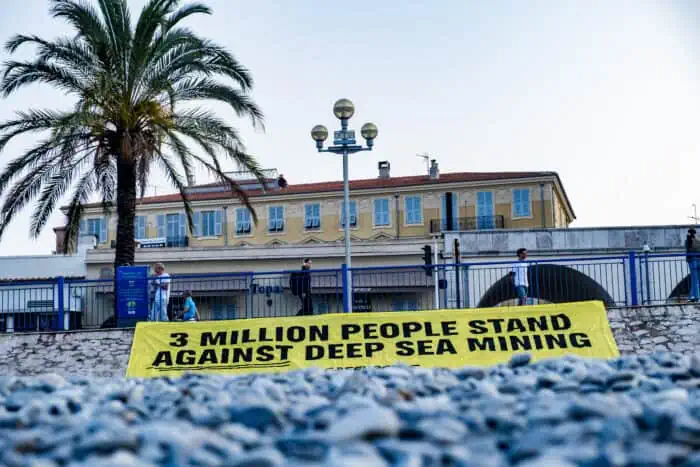Traffic and policing levels are almost back to normal in Nice. For two weeks in June 2025, the One Ocean Science Congress (OOSC) and the third United Nations Ocean Conference (UNOC3) brought together thousands of scientists, environmentalists, and policymakers from around the world to discuss the challenges facing our blue planet.
The conference, co-hosted by France and Costa Rica, also discussed ways to protect and profit from the oceans. In Monaco, the Blue Economy and Finance Forum (BEFF) focused on sustainable investment opportunities that aim to respect the marine environment, rather than merely depleting its natural resources.
But what did it achieve? Was it a success or a costly failure?
Focus
These two weeks focused on some of the main problems facing the ocean, including overfishing, plastic pollution, global warming, maritime transport, and threats to marine biodiversity, as well as establishing legal protection for the high seas. Hundreds of NGOs hosted talks, including Paul Watson from the Captain Paul Watson Foundation and Sea Shepherd France.
Controversy
Some have pointed out the irony of flying thousands of people to Nice for a conference on the ocean and climate change. Others believe that it was necessary to bring all stakeholders together to brainstorm, debate, and commit to legal protections.
Controversially, Greenpeace had its invitation rescinded after stealing a waxwork of President Macron to use in a stunt about Russian gas. However, they still managed to unfurl a banner on the seafront showing that 3 million people signed a petition against deep-sea mining. It was removed shortly afterwards.
-

Greenpeace banner sign against deep sea mining at UNOC3 in Nice on June 11, 2025
Educating The Public
Alongside the various closed high-level meetings, many of the side events aimed to educate the general public. The largest exhibition hall in Nice was named and transformed into a ‘whale’, where the public could watch films, experience the underwater world using VR headsets, and learn about start-ups which aim to either protect or exploit the marine environment.
The most dubious start-up idea I saw was about WiFi underwater, and the most inspiring idea was TonToTon, which collects and manages non-recyclable plastic from coastal areas.
Freedivers Represent
Local freedivers also participated in public events. Up on the hill overlooking Villefranche Bay, host of the AIDA Depth World Championship in 2019, Aurore Asso and Guillaume Nery took part in an informal ‘apéro’-style chat as part of the Bar des Sciences. Guillaume also spoke at the Village des Sciences.
Julie Gautier inspired people with an exhibition of her underwater photographs in one of the largest shopping malls in the area, as well as a projection of her magical underwater dancing, created by Kevin Sempé, at the local opera house.
Eva Andre and Greg Lecoeur participated in a discussion panel on June 8th, World Oceans Day. Greg’s shocking photo of a whale killed by maritime traffic just off Nice can be seen here.
So, What Is The High Seas Treaty?
Also known as “Marine Biodiversity of Areas Beyond National Jurisdiction” (BBNJ), the High Seas Treaty aims to protect the deep seas in international waters. UNOC3 ended with a step towards ensuring greater High Seas protection. Nineteen extra countries ratified the treaty in Nice, bringing the total number of ratifying countries to 50.
However, 10 more are needed to cross the critical 60-country threshold that would trigger the Treaty’s coming into effect.
What is the difference between signing and ratifying a treaty? The signature implies a commitment to avoid acts that would defeat the object and purpose of the treaty, but it is an intention and not a legally binding obligation. Ratification of a treaty, however, is.
If you want to know whether your country has signed and/or ratified, click here.
How To Help
I had the opportunity to speak with Paul Watson on an informal basis and asked him about the challenges facing environmental protesters and activists like himself, as governments around the world continue to clamp down on such efforts.
He told me that it’s essential to respect the law, even if you’re walking a fine line. He also told me that there is more than one way to fight for the ocean, whether by educating others, supporting the actions of NGOs, or living a sustainable lifestyle.
Of course, even the investments you make can have a positive or negative impact on the environment.

